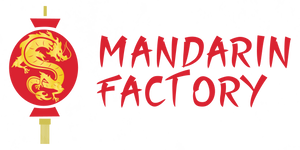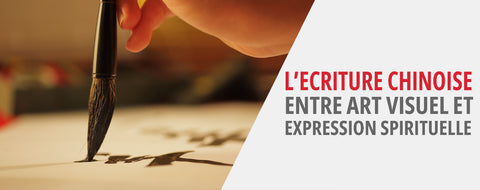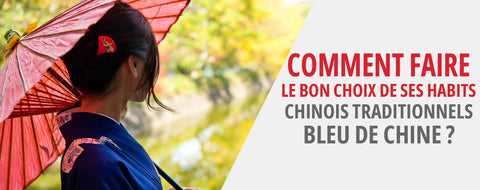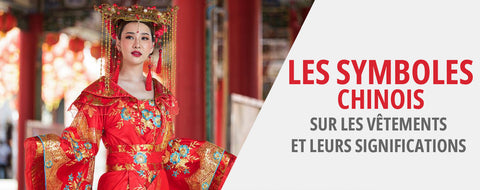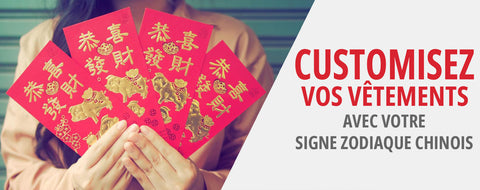
Chinese baguettes: Origins & History
of reading - words
The Chinese character "箸" is translated by "baguettes", which are unique table utensils invented by ancient Chinese civilizations during the Neolithic age, from 7,000 to 6,000 years before J.-C. The old baguettes were mainly Make animal bones. Today, among the various table utensils available, the chopsticks perfectly embody the Chinese cultural characteristics, thus becoming an important symbol of the Chinese tradition.
Meaning of Chinese baguettes
The chopsticks are from China. Although simple, they are a great invention in the history of humanity. "The baguettes, although only two pieces of wood, represent the theory of lever in physics," said Dr. Li Zhengdao, a famous Chinese physicist. According to modern science, long -standing use of the chopsticks makes the fingers flexible, which is beneficial for physical and mental health. There are all kinds of them. Thus, among the different kitchen utensils available today, the baguettes with a lucky charm are very popular with the Chinese.
The baguettes symbolize secular Chinese civilization and embody the 5,000 years of history of China. Whether the Chinese live in China or abroad, they cherish their link with the chopsticks.

"A baguette can be easily broken, ten pairs of chopsticks are held firmly to each other." People know this beautiful and enlightened song by Fu Disheng, a well -known singer in China. Indeed, a wand is so delicate that it can be easily broken. However, ten pairs of baguettes have a force that is indestructible in all circumstances. This symbol that is the baguettes reflects a spirit of unity, perseverance and power, which are strong values in China. This spirit that lives in the chopsticks will influence, inspire and always encourage people.
In a word, baguettes are part of the Chinese gastronomic culture, rich in several centuries.

The story of Chinese baguettes
One of the main characteristics of China's culinary custom is the use of chopsticks. The baguettes, also called "zhu" (箸) in ancient times, have a long history in China. The Book of Rites also recommended: "You can't have a meal without chopsticks". These objects, rich in several centuries of history, appeared during the blood dynasty.
The origin of Chinese baguettes
Lan Xiang, the conservative of the folk baguette pavilion, said that historical documents date the ivory baguettes 3,100 years ago. As it is written in the registers, "Zhou" (the emperor at the end of the blood dynasty) used the ivory baguettes while Ji Zi, the uncle of Zhou, was worried "because it was too luxurious ". After the emperor killed the elephant to impose his power, he sawed the ivory to make baguettes which are known as the first baguettes in history. However, historically it was not the first chopsticks but the first made in ivory in China. This is why ivory Chinese baguettes have a strong symbolism.

The existence of Chinese baguettes dates back almost 1,000 years before that of ivory wands. The first baguettes were made of bamboo because China was then covered with primitive forests. Branches were broken to cook food in a pot. It was impossible to grab food by hand because the food was very hot. Thus, the Chinese found a way to use the bamboo branches to pick up food. We assume that the old chopsticks had a different size of each other.
From the blood dynasty, the chopsticks are of the same length and the same size.
In ancient times, the baguettes were made with local materials such as branches, sticks, animal bones and horns. The chopsticks were mainly made of wood and bamboo in primitive society. The ivory and jade wands appeared in the Xiang and Blood dynasties, while the copper and iron baguettes appeared in spring and autumn and in war states (from 770 to 221 BC .-C.), The flamboyant lacquette baguettes, the delicate silver and gold chopsticks in the Han-Wei and the six dynasties (the kingdom of Wu, Jing, Song, Qi, Liang, Chen). Today, there are baguettes in various materials, especially in ivory, rhino horn, golden ebony and assorted jades.

Legends around Chinese chopsticks
People who use chopsticks, including Chinese, admire the invention, but no one knows who is the inventor. There is no specific data regarding the creator of this invention which has made important contributions to human civilization. Some believe that the increase in illiteracy, among other reasons, explains this lack of information. There are, however, myths around the birth of the baguettes. Here is a summary of two legends, centered on the origin of the chopsticks:
Jiang Ziya's legend
The legend has spread in regions such as the province of Sichuan. It was said that Jiang Ziya was capable of anything other than fishing. He was so poor that his wife could not bear to live with him and planned to kill him to marry another.
One day, Jiang returned to his house empty -handed after causing. His wife said to him: "You must be hungry. I did meat for you. Come and eat!" He was hungry, so he stretched his hands to take the meat. Suddenly, a bird on window peaned his hand. The pain made him scream. In his pain, Jiang tried to chase the window from the window but the bird picota a second time. Jiang was so confused, he did not understand why the bird continued to peck him. To understand, he tried to recover the meat but the same thing happened. He understood that it was because the bird was a divine bird and he chased it to send it to a hill so that no one could see it.

Placed on a branch of bamboo, the divine bird sang: "Jiang Ziya, does not eat meat with bare hands, uses what is under my feet." Hearing this, Jiang took two small sticks from the bamboo and returned home. So he took the meat with the two sticks. After doing this, smoke came out of bamboo. Jiang understood that the chopsticks reacted to the poison that his wife had poured into his food.

Jiang Ziya knew that the magic bamboo given by the divine bird could detect the poison. Thus, he took all his meals with them. After the incident, his wife no longer dared to poison his food and his neighbors learned to eat with a branch of bamboo. Later, more and more people followed this habit, so the custom of eating with chopsticks was transmitted from generation to generation.
The legend of da yu
This legend has spread throughout Northeast China. It is said that Yao and Shun, mythical sovereign of Chinese antiquity, ordered Da Yu to control a flood. After receiving order, Yu swore to eliminate the flood disaster. He did his best to fight against the day and night flood, to the point of not eating and sleeping, not to mention the rest.

Yu went to an island by boat where he was so hungry that he used a pot of earth to cook the meat. Once the meat is well cooked in boiling water, he couldn't take it in hand and did not want to waste time waiting for her to cool, so he took two branches to pick up the meat from the soup. He kept this habit to the point of becoming skillful to collect food with small sticks, which was imitated by his subordinates who understood that this way of eating could allow them not to touch hot and oily food with their hands. Thus, the first types of chopsticks were born.

Although these legends are not historically exact, they showed the way of thinking of people in the past.
How to use Chinese chopsticks?
The correct use of the baguettes can be described as follows: the right hand holds the chopsticks with the thumb and index finger by pinching the upper end of the chopsticks and the other three fingers naturally hold the baguettes, so the two ends of the chopsticks must stay aligned. Before the meal, the chopsticks are carefully placed to the right of the bowl and after the meal, in the middle of the bowl, in the vertical direction.

Taboos on the baguettes
Chinese chopsticks include their share of good, but also bad ways not to do at the risk of bringing you bad luck:- Unexpected misfortune : Having unequal length baguettes on the table is considered an omen of misfortune.
- Immortal guidance : If the chopsticks are pinched by the thumb, the middle finger, the ring finger and the little finger while the index holds the hand, which refers to the blame.
- Suck the baguettes with a sound : Having a piece of chopsticks in your mouth and sucking it repeatedly with sound is a rude behavior.
- Hit the cup : Hitting the plates and bowls is considered disrespectful and is despised by others.
- Shake to make choices : Taking baguettes to "search" on the plates is a bad way called "digging the grave".
- The flowing food : Drop soup into other dishes or on the table when picking up food with chopsticks, as it is deemed disrespectful.
- Heaven and earth upside down : Using baguettes upside down means that you are a beggar.
- Keychain : Using a baguette to stick foods on the plates is perceived as humiliating for others at the table.
- Burn public incense : The baguettes should not be left vertically in a bowl of rice, because it looks like the ritual of incense which symbolizes the fact of "nourishing" the dead.
- Cross : During the meal, the chopsticks should not be crossed on a table as it is perceived negatively.
- The fall of the chopsticks disturbs the immortal : During a meal, it is discourse that chopsticks accidentally fall on the ground, because the fall of chopsticks represents a disturbance of the buried ancestors.
Chinese baguette materials
The chopsticks seem simple and flexible, but they vary in types and composition. There are more than 100 types in Chinese history, the most common of them in wood, bamboo and melamine. Lan Xiang has divided Chinese chopsticks into five types according to his collection and research. They are as follows: bamboo baguettes, metal chopsticks, ivory and bone chopsticks, jade chopsticks and chemical chopsticks.
The first and most primitive, wooden and bamboo baguettes remain popular today (discover our Chinese bamboo chopsticks and our wooden sticks). Bamboo baguettes are made from different types of bamboo including bamboo nandina, spotted bamboo as well as pubescens phyllostachys, among others. Bamboo is considered a symbol of traditional Chinese values. It is an example of harmony between nature and human beings. There are many bamboo accessories, especially at Calm bamboo with its Bag collection.

Metal baguettes are today bronze, gold, silver, iron andstainless steel.
Ivory and bone wands can be created from animals such as cow, camel and elephant, etc. Camel bones are often used in northern China.
The fourth type of baguette is the jade. The materials used vary from the use of white marble, white jade, the emerald used by the dowager Empress Ci XI of the Qing dynasty, as well as the golden emerald. Discover our magnificent pair of Chinese jade chopsticks.
Advantage of eating with chopsticks
- The use of chopsticks facilitates a slower and healthy diet. Indeed, they catch smaller portions of foods than a fork or a spoon, which allows you to better assess the feeling of satiety, and not to eat more than its hunger.
- The use of chopsticks requires better hand-and-end coordination than eating with your fingers, with a fork or with a spoon. The baguettes allow the hands to do exercises with different muscle groups and can improve brain development, especially agility, during early childhood (Chinese learning baguettes)
